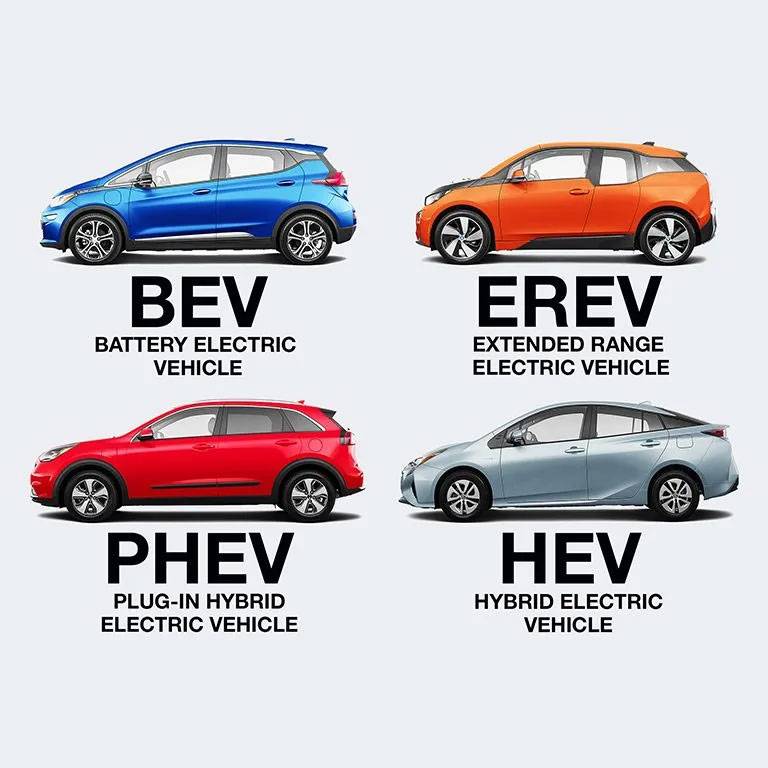The development of electromobility is considerably expanding the range of electric drives on the market. To better understand the differences between them, it is useful to know a few terms. These are acronyms such as EV, BEV, HEV, PHEV, and FCEV. They help us to quickly identify the technology under the bonnet of a vehicle and its level of electrification.
EV (Electric Vehicles)
The most inclusive category encompasses electric vehicles, abbreviated as EVs (Electric Vehicles). These vehicles exclusively utilize electricity for propulsion, encompassing electric cars, buses, trams, trains, trolleybuses, select ships, boats, and aircraft. Additionally, electric bicycles, scooters, and other personal transportation devices fall within this classification. All electric vehicles qualify as zero-emission vehicles.
BEV (Battery Electric Vehicles)
A specific class of electric vehicle operates solely on electricity stored within rechargeable batteries. The swift evolution of battery technology has propelled the popularity of these vehicles in recent years. Remarkable technological strides have endowed Battery Electric Vehicles (BEVs) with performance capabilities that rival those of their internal combustion engine counterparts.
HEV (Hybrid Electric Vehicles)
While the term ‘electric vehicle’ is included in the English name for hybrid electric vehicles (HEVs), hybrids don’t perfectly align with this classification. This is due to their combination of an electric drive alongside an internal combustion engine that powers an electric motor. This motor doubles as an energy regenerator, capturing energy during braking and storing it in electric batteries to assist the drivetrain. Typically, these batteries consist of supercapacitors or, less frequently, small battery units. Although hybrid vehicles are considered low-emission, emitting CO2 and pollutants, their environmental impact is less pronounced compared to fully internal combustion alternatives.
PHEV (Plug-in Hybrid Electric Vehicles)
Advancing the hybrid vehicle concept, plug-in hybrids (PHEVs – Plug-in Hybrid Electric Vehicles) emerge, capable of being connected to external power sources. Similar to battery-powered vehicles, plug-in hybrids feature batteries smaller than those in pure electric vehicles but boast notably greater capacity than the supercapacitors or relatively small batteries found in traditional hybrid designs.
Plug-in hybrids have the flexibility to connect to external power sources like electrical outlets or charging stations, extending their electric-powered range. PHEVs are also categorized as low-emission vehicles.
FCEV (Fuel Cell Electric Vehicles)
Fuel Cell Electric Vehicles (FCEVs) represent the pinnacle of electric vehicle technology. They feature a fuel cell that converts fuel, typically hydrogen, into electricity, with condensed water vapor being the sole by-product of this reaction. Similar to plug-in hybrids, FCEV designs incorporate batteries, with the energy they store being produced by the fuel cell. Hydrogen-powered vehicles boast complete emission-free operation.







